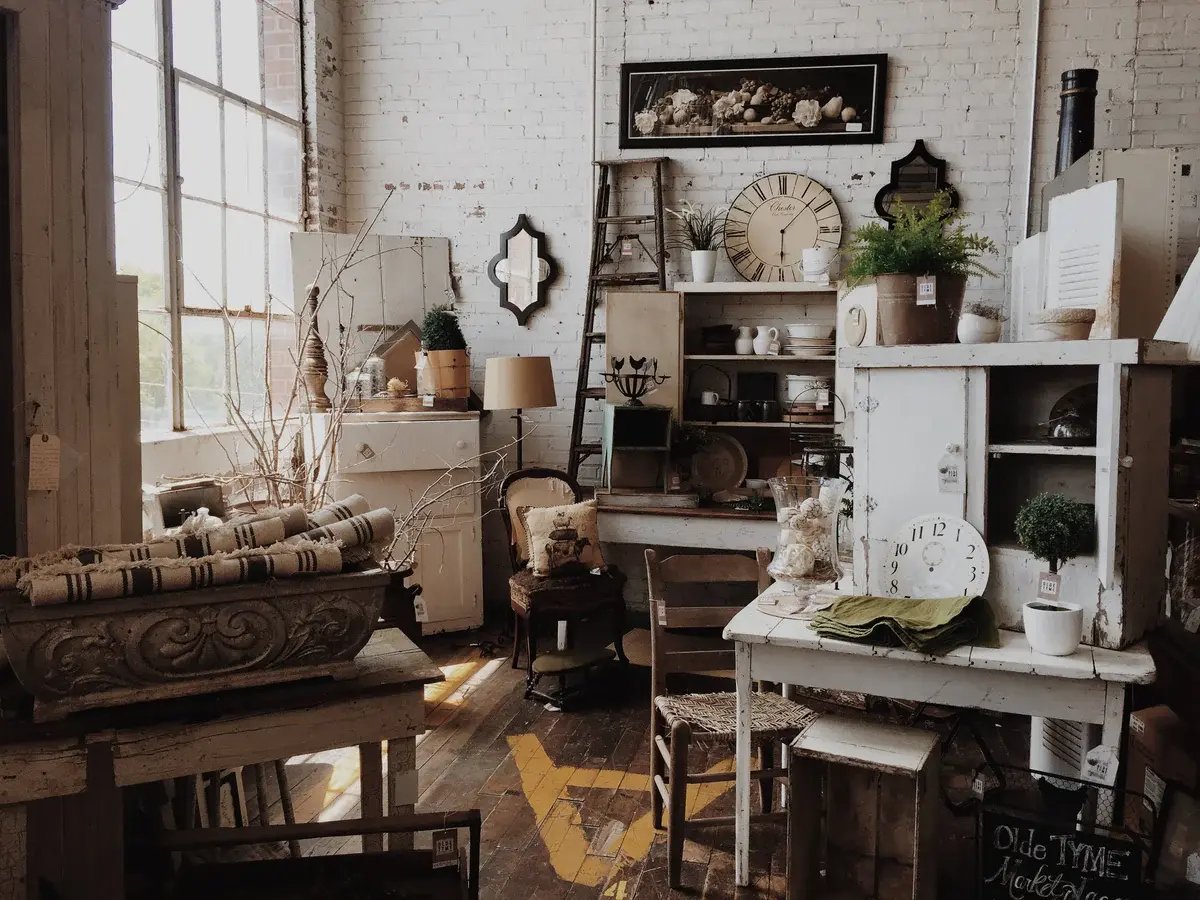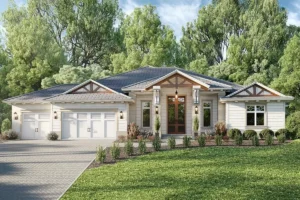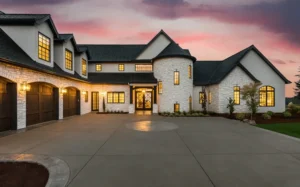
What is Vintage Home Décor?
Vintage home décor refers to the style of using furniture, accessories, and design elements that are typically from 20 to 100 years old. This style captures the essence of bygone eras, seamlessly integrating their unique design elements into contemporary living spaces. Unlike antiques, which are generally over 100 years old, vintage items span a variety of styles, from the early 20th century to the 1970s, giving you a broad range of choices for your home’s look and feel.
The appeal of vintage décor stems from its capacity to infuse a space with history, character, and a distinct sense of individuality. When thoughtfully integrated, it creates interiors that are not only sophisticated and inviting but also environmentally sustainable.
The Evolution of Vintage Home Décor: Key Eras and Trends
Understanding the eras that define vintage décor helps in selecting pieces that align with your personal aesthetic while maintaining a cohesive look in your home. Each period offers unique contributions to vintage design, from furniture to color schemes and materials.
Influential Design Eras
- Art Deco (1920s–1930s)
- Renowned for its geometric designs, rich color palette, and opulent materials. Common features include chrome, glass, and exotic woods. Art Deco furniture often has sleek designs with mirrored surfaces and intricate metalwork, creating a sense of glamour.
- Mid-Century Modern (1940s–1960s)
- Defined by clean lines, organic shapes, and minimalism, this era introduced materials like plywood, plastic, and metal. Charles and Ray Eames, along with Le Corbusier, pioneered the creation of functional yet stylish furniture that has become iconic.
- Victorian and Edwardian Revival (1960s–1970s)
- This period saw a revival of traditional, ornate furniture styles from previous centuries. Floral prints, heavy wooden pieces, and fine craftsmanship were key features of this trend.
Essential Elements of Vintage Home Décor
Attaining a vintage aesthetic requires careful consideration of the fundamental elements that characterize this style. These components include color schemes, furniture, patterns, materials, and lighting, each bringing a distinctive feel to a space.
Color Palettes and Patterns
The colors of vintage home décor are often tied to the era in which they were popular. In the 1950s, soft pastel shades like mint green, butter yellow, and baby pink dominated. By the 1970s, earth tones such as mustard yellow, avocado green, and burnt orange took over.
Popular patterns include:
- Floral patterns, characteristic of the 1960s and 1970s,
- Geometric designs, made iconic by the 1920s Art Deco movement,
- Bold stripes and checks, often used for accentuating upholstery and décor pieces.
Vintage Furniture Styles
Furniture forms the backbone of vintage décor. Popular pieces include:
- Chesterfield sofas, with tufted leather and rolled arms, from the Victorian era
- Eames lounge chairs and low-slung coffee tables from the mid-century modern movement
- Danish teak wood pieces, which are minimalist yet functional
- Wrought iron bed frames, typically ornate and romantic in style
Materials in Vintage Home Décor
Materials used in vintage furniture and accessories play a key role in its timeless appeal. Look for these materials when sourcing vintage décor:
- Solid wood (especially oak, mahogany, and teak)
- Brass and wrought iron
- Velvet, leather, and chintz fabrics
- Ceramics and porcelain for vases, plates, and other décor items
Blending Vintage Décor with Modern Design
Incorporating vintage elements into a contemporary home can be an art form. The goal is to create a harmonious space that doesn’t feel overly cluttered or like a museum exhibit.
Mixing Modern and Vintage
The most impactful approach is to create a seamless integration of modern and vintage décor. For example, consider pairing a classic velvet armchair with a sleek contemporary side table or combining a mid-century dining set with modern lighting. This thoughtful contrast adds visual depth while maintaining a fresh, updated look.
Upcycling and Repurposing Vintage Pieces
A great way to achieve a vintage look on a budget is through upcycling and repurposing. Consider refreshing old furniture by painting or reupholstering it. For example, an outdated dresser can be transformed with a fresh coat of paint, or a vintage suitcase can be converted into a quirky coffee table.
Finding Authentic Vintage Items
Sourcing authentic vintage items requires patience and research, but it’s worth it when you find that perfect piece. Some of the best places to find vintage décor include:
- Flea markets and estate sales
- Digital platforms such as eBay, Etsy, Facebook Marketplace and Amazon
- Antique shops, which often have curated collections
Click Here: The Ultimate Guide to Lowe’s Home Improvement Ceiling Fans
Vintage Home Décor Ideas for Each Room

Vintage Living Room
Your living room can be the heart of your vintage home, offering warmth and personality. Consider including the following pieces:
- A retro coffee table with sleek mid-century lines
- A vintage sofa, such as a leather Chesterfield or velvet settee
- Mirrors with ornate gold frames to create the illusion of space
- Brass or ceramic table lamps for soft, vintage lighting
Vintage-Inspired Bedroom
Design a warm and inviting vintage-style bedroom with the following elements:
- An intricately designed wrought iron bed
- Wooden dressers featuring brass or ceramic hardware
- Retro bedding adorned with floral or geometric patterns
- A vintage vanity table complemented by an elegant mirror
Vintage Kitchen
The kitchen is an excellent place to showcase fun retro elements, especially in appliances and cabinetry. Look for:
- Retro refrigerators in pastel colors like mint green or butter yellow
- A vintage dining set with chrome accents
- Glass-front cabinets to display vintage dishware
- Classic ceramic and porcelain plates from the 1950s and 1960s
Vintage Bathroom
Vintage bathrooms often feature timeless fixtures that add elegance and charm. Incorporate the following elements:
- A clawfoot bathtub for a classic, luxurious look
- Vintage-inspired floor tiles, such as black and white checkerboard patterns
- Brass sink fixtures and mirrored sconces
- Ornate, vintage-style lighting for an authentic touch
Sustainability and Vintage Home Décor
One of the greatest benefits of embracing vintage home décor is its inherent sustainability. By purchasing vintage or second-hand items, you’re reducing the need for new resources and helping minimize waste. This approach aligns with eco-friendly design practices, making vintage décor an ethical choice for environmentally-conscious homeowners.
Restoring and Maintaining Vintage Pieces
Caring for vintage furniture and décor ensures that these pieces remain beautiful and functional for years to come. Here are a few maintenance tips:
- Wood furniture: Polish regularly to maintain shine and avoid excessive exposure to direct sunlight.
- Upholstery: Have vintage fabric professionally cleaned or reupholster it with modern fabric for a fresh look.
- Lighting: Ensure that vintage lamps and chandeliers are up to modern electrical standards before use.
DIY Vintage Décor Projects
For those who love DIY, there are numerous ways to introduce vintage flair to your home. Try some of these ideas:
- Distressing wooden furniture: Create a worn, vintage look using sanding and painting techniques.
- Reupholstering vintage chairs: Use retro-inspired fabric to give an old chair new life.
- Vintage lighting restoration: Refurbish old lighting fixtures for modern use, making sure to rewire them for safety.
Overcoming Challenges in Vintage Décor
While vintage décor is visually stunning, it comes with a few challenges:
- Authenticity: When sourcing vintage pieces, it’s important to verify their authenticity to avoid knock-offs.
- Wear and Tear: Vintage items are often pre-loved and may show signs of wear. Consider if you’re willing to restore or refurbish them before buying.
Conclusion: Crafting Timeless Spaces with Vintage Home Décor
Vintage home décor offers endless possibilities for creating a unique, charming, and sustainable living space. By blending pieces from different eras, you can design a home that tells a story while staying timeless. Whether you’re starting small with a few key accessories or diving into full-room transformations, vintage décor brings history, craftsmanship, and character into your modern home.
FAQs
1. What is Vintage Home Décor?
Vintage décor uses furniture and design elements from 20 to 100 years ago, blending historical styles into modern spaces.
2. How Can I Blend Vintage and Modern Décor?
Mix vintage items with modern pieces, like pairing a retro armchair with a sleek table, for a balanced and stylish look.
3. Where Can I Find Authentic Vintage Décor?
Find vintage items at flea markets, estate sales, online platforms like eBay, or in antique shops.
4. Why Is Vintage Décor Sustainable?
Vintage décor is sustainable by reusing existing items, reducing waste, and lowering the demand for new products.
5. How Do I Maintain Vintage Furniture?
Polish wooden furniture, clean or reupholster fabrics, and rewire vintage lighting to ensure safety and longevity.







